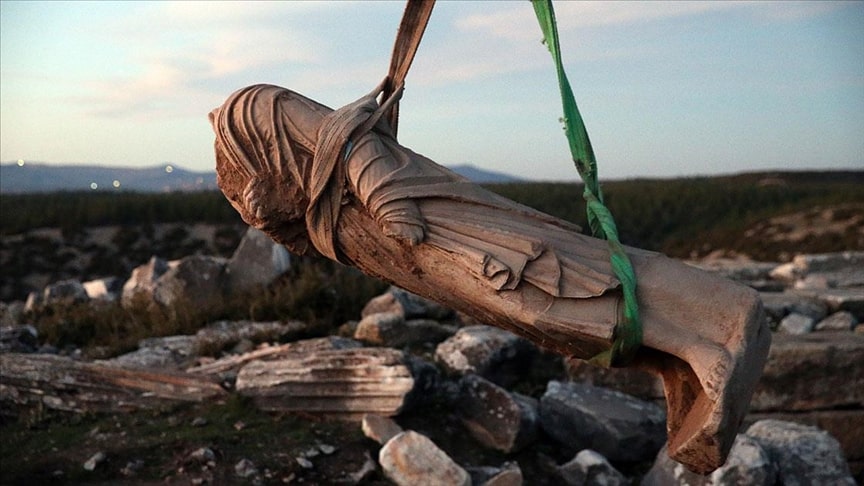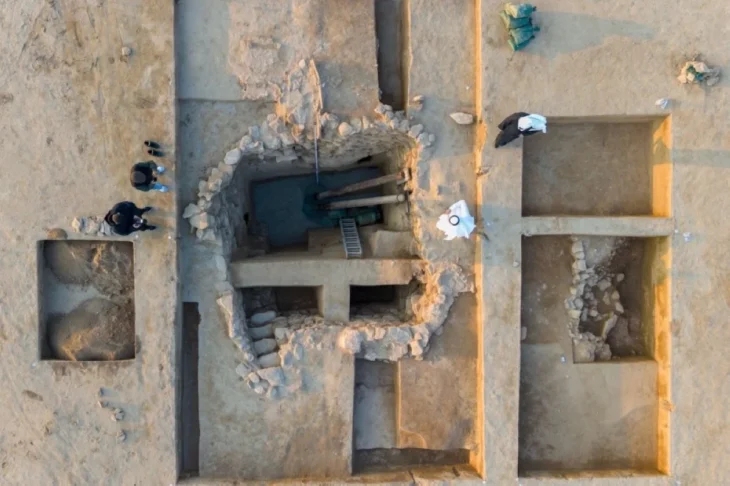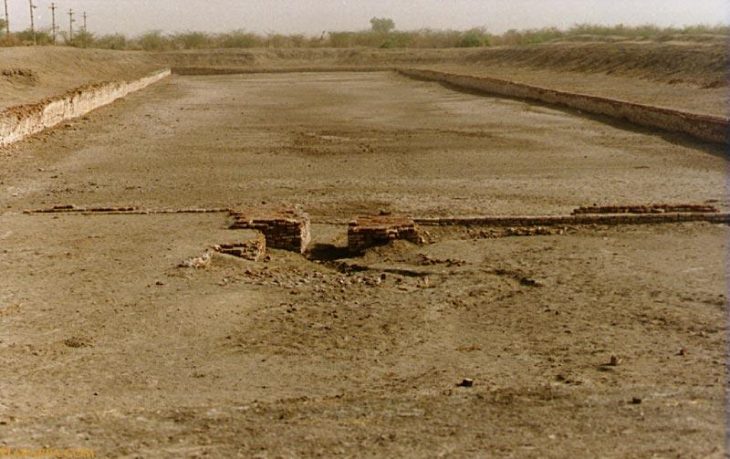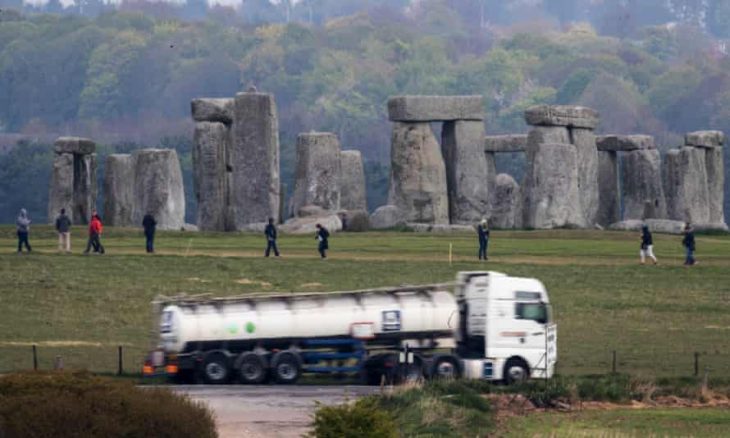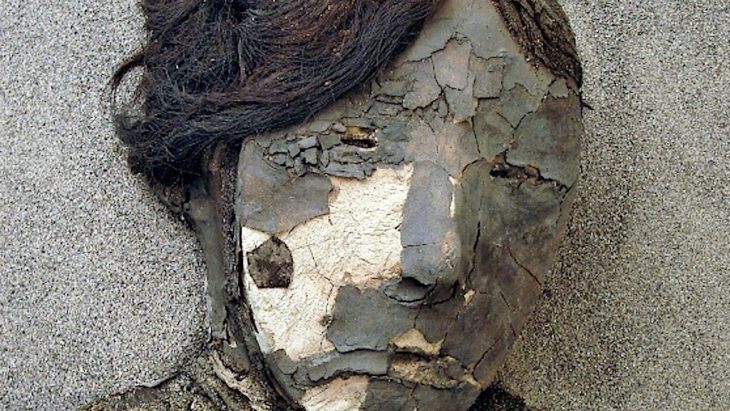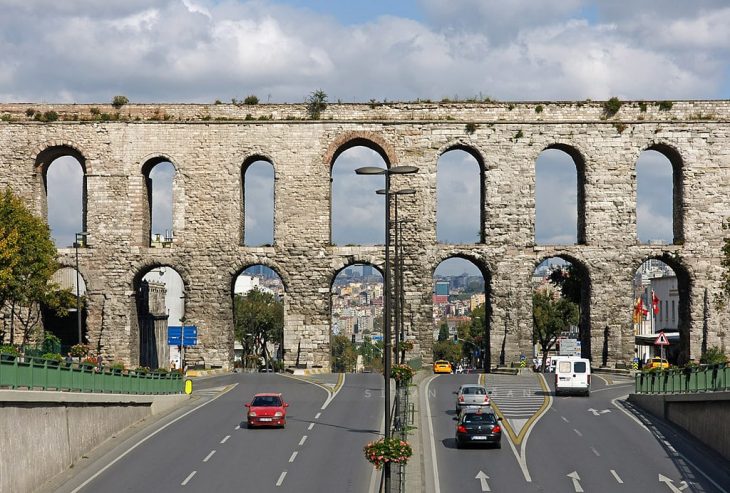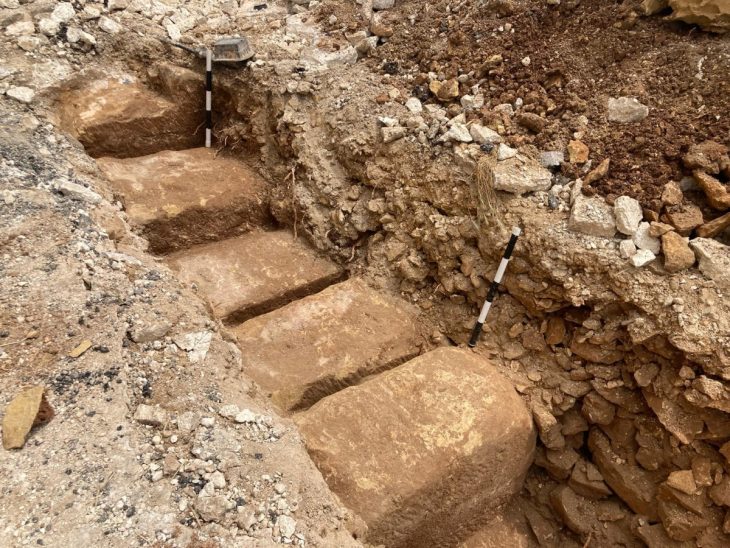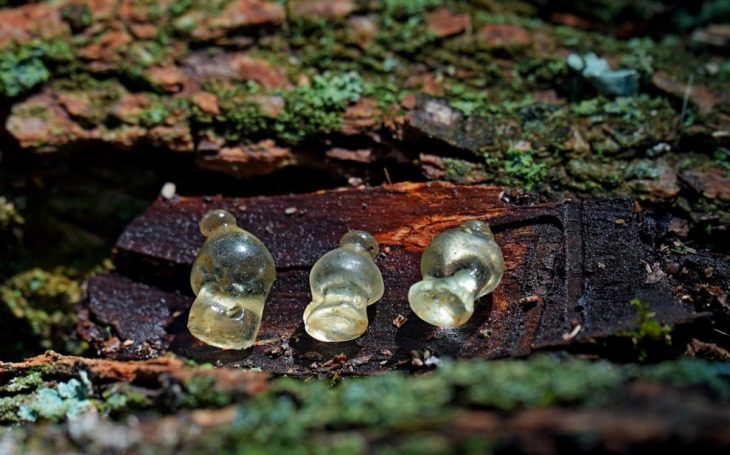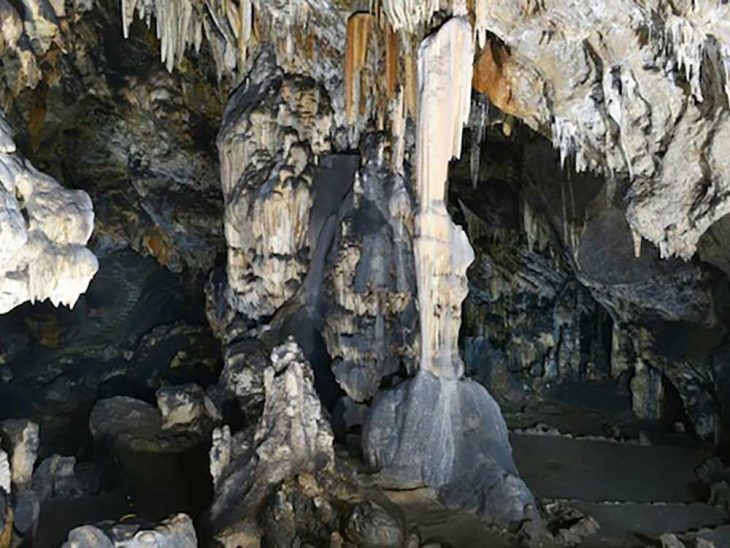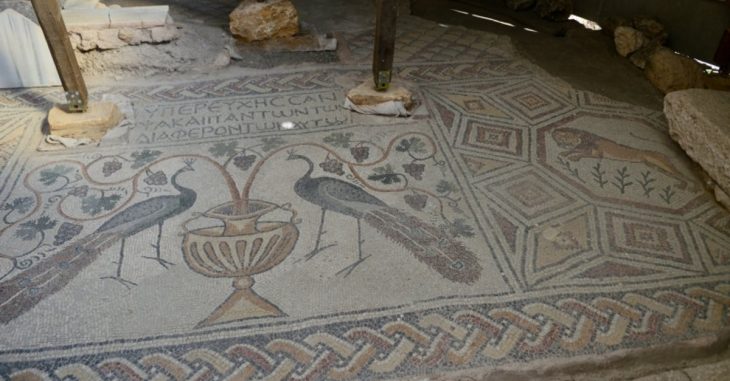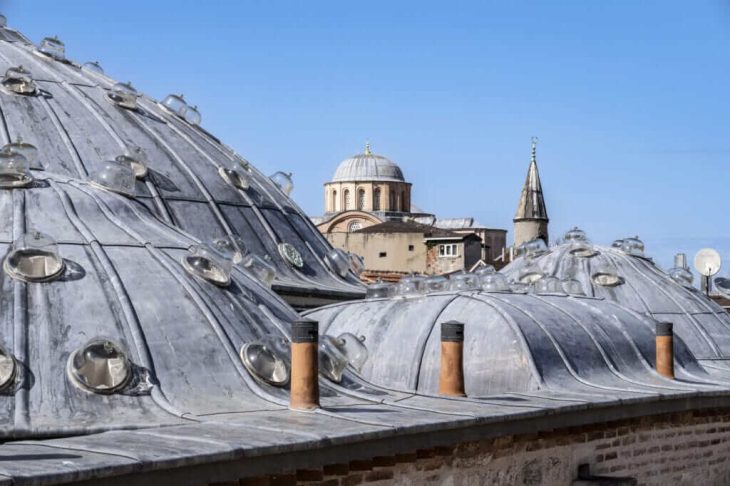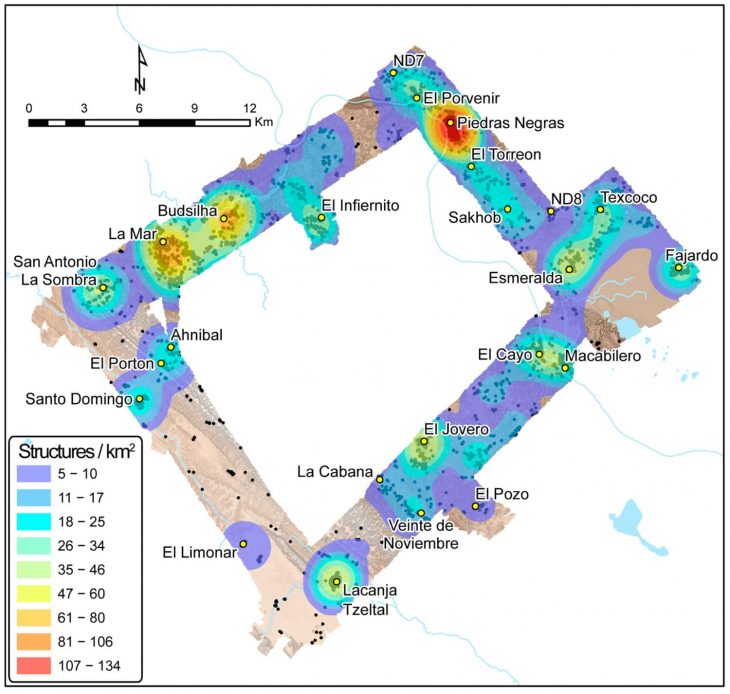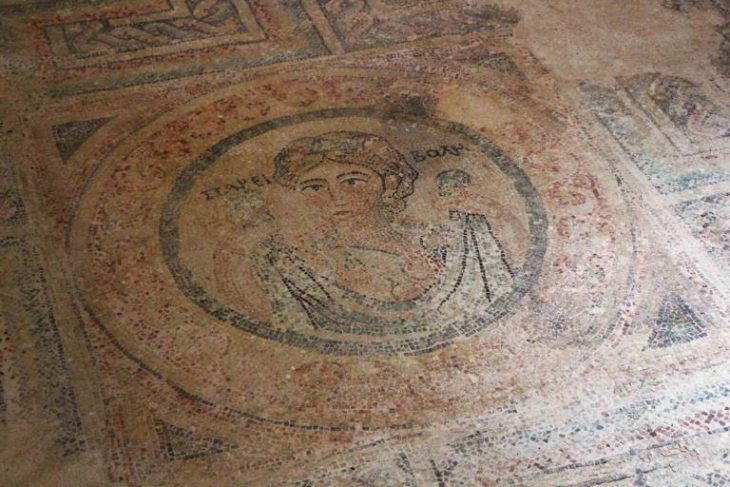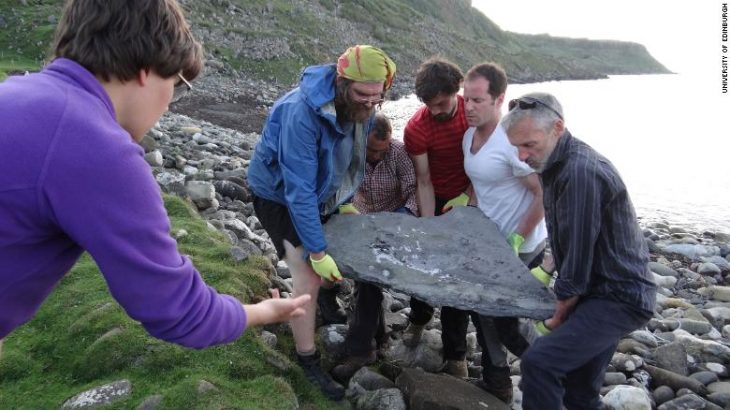During the excavations in the ancient city of Blaundos in the Ulubey district of Uşak, two statues of 2000 years old, which are considered to belong to the Roman Period, were unearthed from the courtyard of the Temple of Demeter.
Blaundus Ancient City which is located on the top of a hill looks like a peninsula surrounded by three-stream beds and it is 40 km away from Uşak. The city which it is close to the border of Phrygia In the Lydia Region was built in the Hellenistic period (B.C. III. C.) by Macedonians after Alexander the Great’s military expedition to Anatolia. Then, it was occupied with the Kingdom of Pergamum and the Roman Empire. The place which was a military city during the period of the Pergamum Kingdom maintained its strategic importance in the Roman and Byzantine periods as well.
Excavations have been carried out by the Uşak Museum and Archeological Department of Uşak University since 2018 in Ancient city Blaundus. Digging work to unearth the city, is currently focused on the area where a temple dedicated to the Greek mythological goddess Demeter is located.
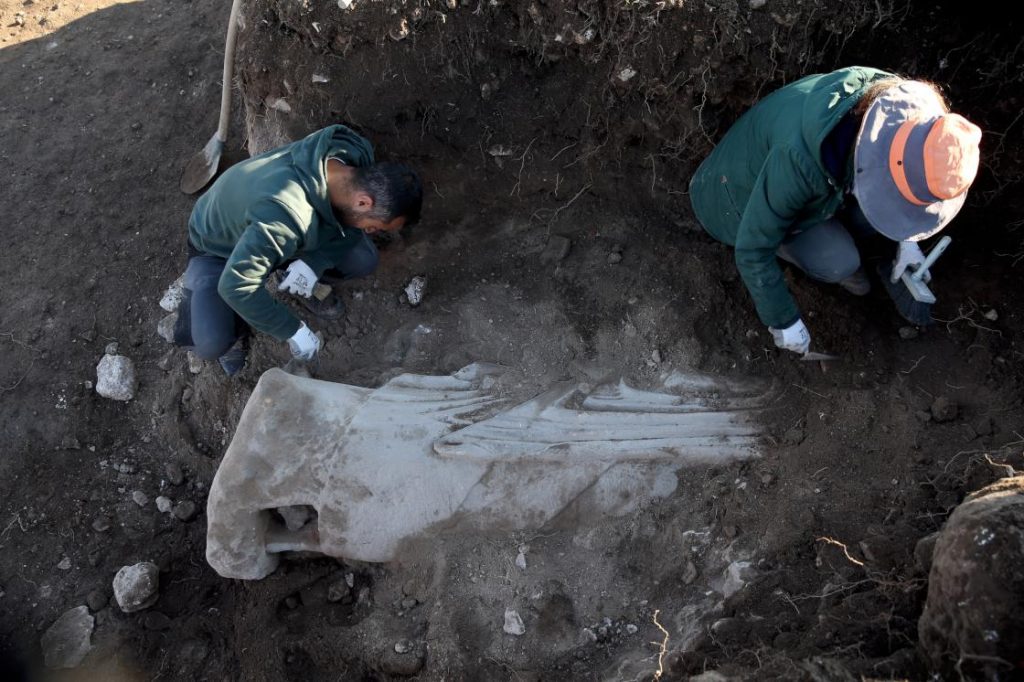
Speaking to Anadolu Agency (AA), Birol Can, a faculty member of the Archeology Department of Uşak University, said the team has found two statues in the courtyard of the temple located in the center of the city.
Can, who is leading the excavation, said one of the discovered statues was 185 centimeters (6 feet) tall with no head, while the other was missing its head, right arm, and both legs.
“We don’t know yet whether the statues are from the temple site or from street-side honorifics,” he said, adding that further research on the discovery was ongoing.
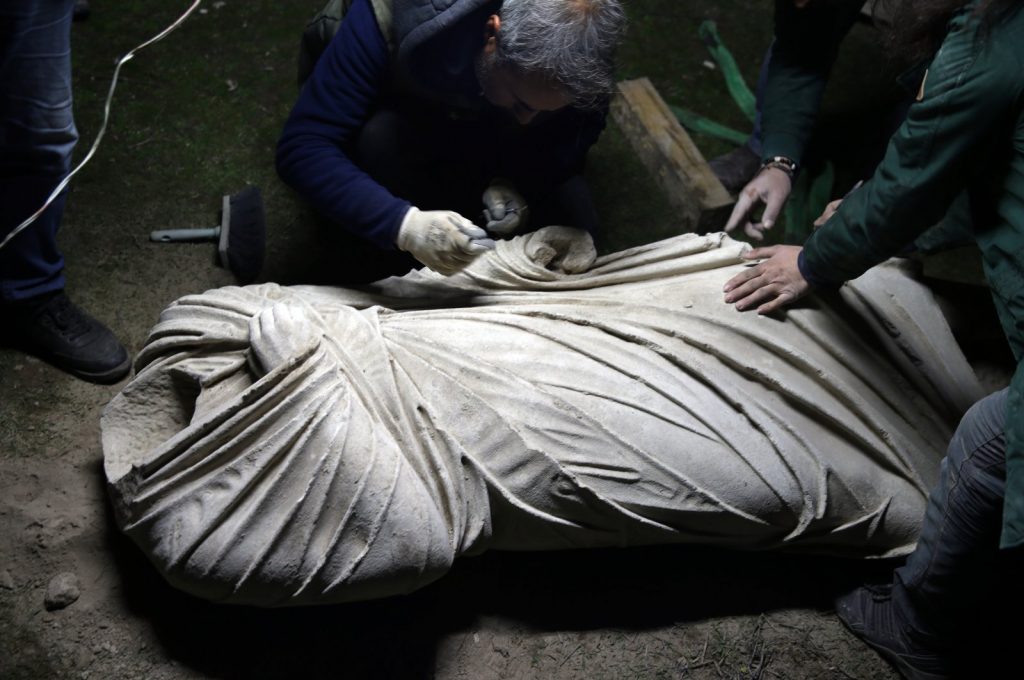
“Both finds are male marble statues. We have not yet determined who they are – whether they are gods, emperors, or statesmen,” Can said.
Noting that the statues may have been inspired and created in the Roman-era style, he said: “We can say that the art of sculpture has been at its peak since the second half of the fourth century B.C.”
The statues were taken to the Uşak Archaeological Museum after cleaning and examination studies.

